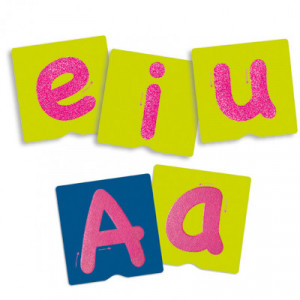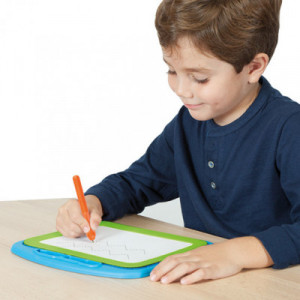Written expression disorder (Dysgraphia)
Dysgraphia is a learning disorder that presents certain coordination difficulties of the hand and arm, necessary to write correctly, legibly, and in an orderly manner.
Games should train coordination, psychomotor skills, stroke definition and calligraphy. It is also important to work with these children on the directionality of writing and graphic attention.
Discover games and materials that will allow you to improve your writing skills in a fun and entertaining way.

Games for the treatment of dysgraphia
The child can perform many fun activities at home that support the treatment of dysgraphia. The treatment of dysgraphic symptoms modifies the cognitive processes related to writing. The treatment strategy is based on the stimulation of the following areas:
Fine psychomotor skills
The therapy seeks to improve fine motor skills by intervening in the child's ability to execute the strokes and spelling required for writing. Games such as word puzzles train this ability, as well as the visual recognition of words and their sequencing. The moulding paste can be used not only for psychomotor training but also to model the letters of the alphabet and improve recognition and visual discrimination.
Perception
Perceptual difficulties have to do with how the child organizes information and how he or she shapes it into written text. Therapy improves aspects such as attention span, information discrimination, or the ability to reproduce on paper the drawings and models provided to the child. Language games such as pre-writing boards are ideal tools to support these activities.
Visomotrocity
Vismotricity is the coordination between the eye and the hand. The improvement in this aspect leads to a better organization of the text on paper. It is related to fine motor skills, and can be worked with resources such as plasticine molding.
Grafomotricity
It consists of the child's ability to generate the necessary movements in the execution of strokes and spelling in the correct way. It is a learning process that begins with a free stroke until the child becomes fluent in the use of writing tools. Later the child will learn to execute guided traces and patterns. Akros provides multiple educational resources for this training such as pre-writing punches, related to fine motor work. The work is executed with sheets that require following a few lines or dotted drawings.
Network Writing
This is the traditional discipline of calligraphy. The graph-writing expands the field of graphomotor improvement by exercising the writing of letters and whole words. It implies that the child is able to write with the appropriate pressure on the paper, and with a clear and legible letter.
Perfection writer
It consists of the child being able to write freely, copy texts or write dictation. The child's first approach to disciplines such as spelling or writing takes place.




















